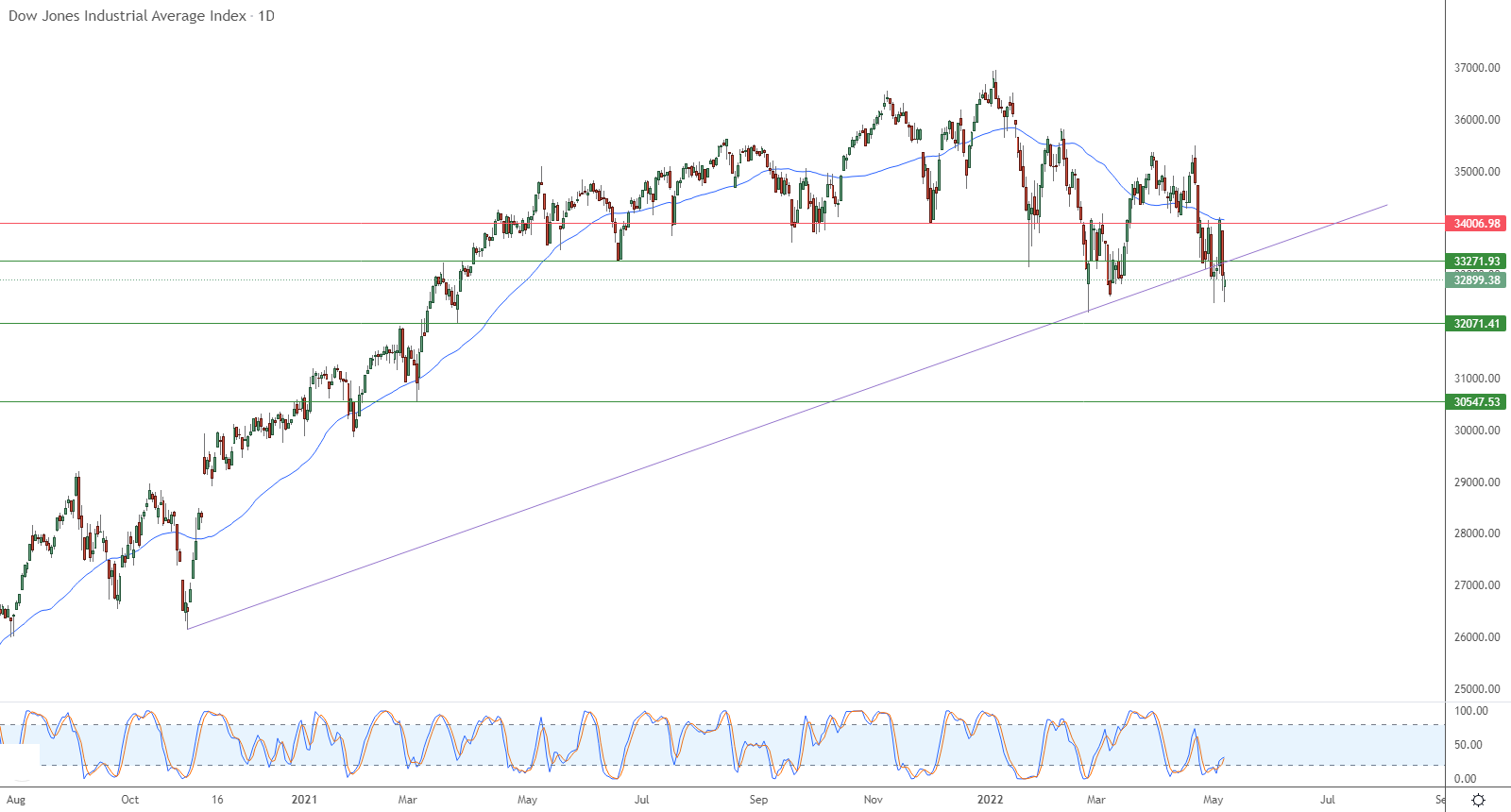The Dow Jones Industrial Average declined during its recent trading at the intraday levels, to record losses for the second day in a row, by -0.30%, to lose about 98.60 points. It settled at the end of trading at the level of 32,899.38, after its decline in trading on Thursday by -3.12%. During the past week, the index decreased by -0.23%, which is the sixth consecutive week in which the index closed with losses.
The April employment report showed that nonfarm payrolls rose by 428,000 jobs, more than the 380,000-increase expected in a Bloomberg poll, while payrolls for March were revised down from the previously reported result to be an increase in the revised reading.
However, the labor force participation rate declined to 62.2% from 62.4% in the previous month. Moreover, hourly earnings rose 0.3%, slower than the 0.4% gain expected and after a 0.5% increase in March.
Technically, the index’s decline came because of its collision earlier with the resistance of its simple moving average for the previous 50 days. It surrendered to the negative pressure, despite the start of the influx of positive signals in the relative strength indicators, after it reached areas of severe oversold operations. This indicates the control of the selling forces on the movement of the index, to cross its recent decline supported a major ascending trend line over the medium term, as shown in the attached chart for a period of time (daily). This may double the negative pressures on its upcoming trades.
Therefore, we expect more decline for the index during its upcoming trading, as long as the resistance 34,000 remains, to target the first support levels at 32,000.
Investors need to have confidence that the Fed will not rise too strongly and that the economy will fall into recession in their fight against inflation. The jobs report was balanced and may prove to mitigate the extreme volatility of recent days.
During a discussion at Carlson College of Management on Friday, Minneapolis Federal Reserve President Neil Kashkari responded to the views of many hawkish commentators that the Fed is too late in the battle to control inflation, Kashkari said the Fed's future guidance has been successful in driving long-term interest rates.

